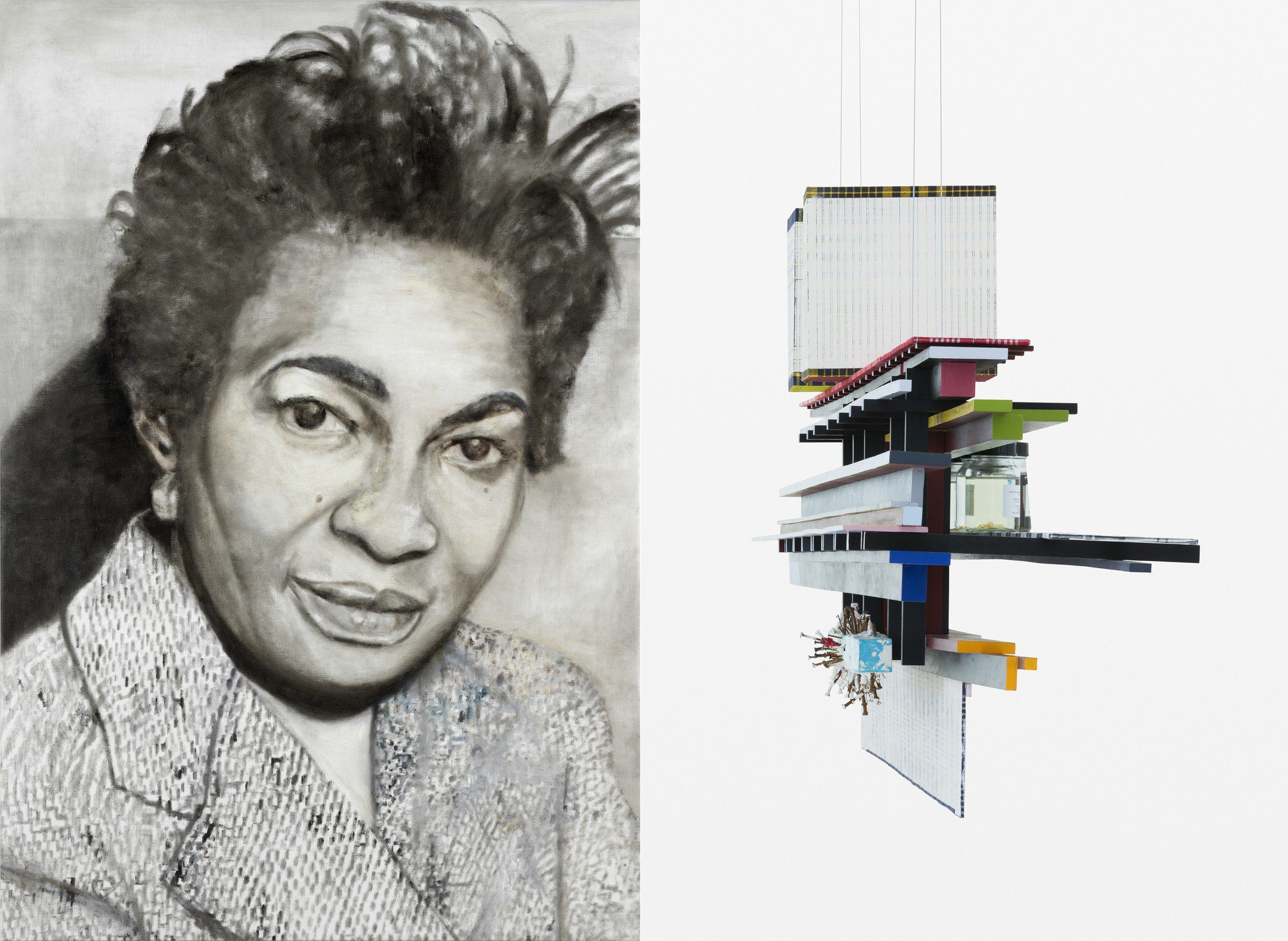Remy Jungerman and Iris Kensmil are representing the Netherlands at the 58th Venice Biennale. The Measurement of Presence brings together influences from different backgrounds. Jungerman and Kensmil combine the inspiration they draw from 20th-century modernism, particularly Mondrian and De Stijl, the Russian avant-garde and artist stanley brouwn, with elements of other traditions and perspectives.

Iris Kensmil, The New Utopia Begins Here: Claudia Jones, 2018. Oil on canvas, 155 x 115 cm. Photo: Gert Jan van Rooij. Remy Jungerman, Horizontal Obeah GEENGESITONU (detail), 2018. Painted wood, cotton textile, kaolin, yarn and nails, 285 x 90 x 30 cm. Photo: Gerrit Schreurs
The idea for the exhibition arose from a reflection on the history of the biennale and its location (the modernist pavilion of architect Gerrit Rietveld), from conversations between the curator and the artists, and from current debates.
The Venice Biennale has been organised since 1895. The Giardini, where the national pavilions are located, largely reflect the geopolitical relations of the 20th century. It is, however, also a place that has undergone a transformation in the previous century. Originally, the pavilions were meant as national show rooms, based on 19th century concepts about nationalism. During the 20th century this view gave way to an unconditional belief in the universal values of modernism. Today it is clear that both viewpoints have been abandoned. The permanent flow of people and objects breaks through national boundaries and leads to the emergence of new identities. Places and societies become intertwined in a globalized world. The Measurement of Presence is a transnational presentation that reflects on these developments.
Within their work, artists Remy Jungerman and Iris Kensmil investigate traditions and the past, and bring them into contact with the present. Their transnational position brings together influences from various backgrounds. In their work, they combine the inspiration they find in 20th century modernism and the avant-garde with elements from other traditions and positions. As a result, the artists measure the possibilities of changes.
Iris Kensmil depicts in her work an inclusive history from a Black feminist perspective. She honours Black authors, philosophers, activists and musicians, and, in general, the Black counter-movement that is an undeniable part of modernity. She connects the utopian thinking of modernism with Black female intellectuals whose work offers its own perspective on modernity and the future.
In collaboration with The Black Archives, Kensmil researched Black female utopians, focusing mainly on the Caribbean, the US, and Europe. This research resulted in eight portraits placed in two installations: The New Utopia Begins Here #1 and #2. In a third installation, Beyond the Burden of Representation, Kensmil reflects on the position of a number of artists who take a clear position to protect their authenticity and the interpretation of their work, such as stanley brouwn.
In his work, Remy Jungerman brings together motifs from Africa, from Maroon culture and from 20th century modernism. He is interested in the path travelled by patterns and motifs. Jungerman will create two large-scale installations: Promise IV and Visiting Deities, in which he intends to bring together the strength of the forefathers of the greater Dutch world—ancestors from the Netherlands, Suriname, Indonesia and elsewhere—with the aim of connecting the various cultures and entering into a future-oriented, open conversation.
During 2018 Jungerman lived in New York, a city with a dual meaning for him. It is the city where Piet Mondrian, an artist that is of great importance to Jungerman, found refuge in 1940. At the same time New York is the place where in 1674 the Dutch traded Suriname with the British, and Suriname became a Dutch colony. For Jungerman, living in this city in preparation for the Biennale gave him the perfect setting in which to think about the subject of measurement and globalization.
Rietveld Pavilion
An important part of the concept is the pavilion, designed by architect Gerrit Rietveld in 1954. The features of this building—open space, light, modular dimensions—have been adopted in the exhibition installation. The architect wished to create a space where people could meet. The works by Jungerman and Kensmil will emphasize this human element of coming together, sharing and experiencing.
The Giardini largely reflects the geopolitical relations of the 20th century. Originally, the pavilions were intended as national showcases. This view underwent a transformation in the 20th century and made way for unconditional faith in what one saw as the universal values of modernism. Today it is clear that both these views have had their day. The permanent flows of people and objects break boundaries and produce new identities outside and separate from nation states. Places and societies are becoming ever more interconnected in our globalized world. As a result, we risk losing the specific. In The Measurement of Presence Jungerman and Kensmil reflect on these developments.
Curator: Benno Tempel
Commissioner: Mondriaan Fund
Iris Kensmil and Remy Jungerman
The Measurement of Presence – the Dutch Pavilion at the Venice Biennale
will be on view from 11 May – 24 November 2019
Preview: 8 – 10 May (Opening Dutch Pavilion: 8 May 12:00 hrs.)
More Editorial